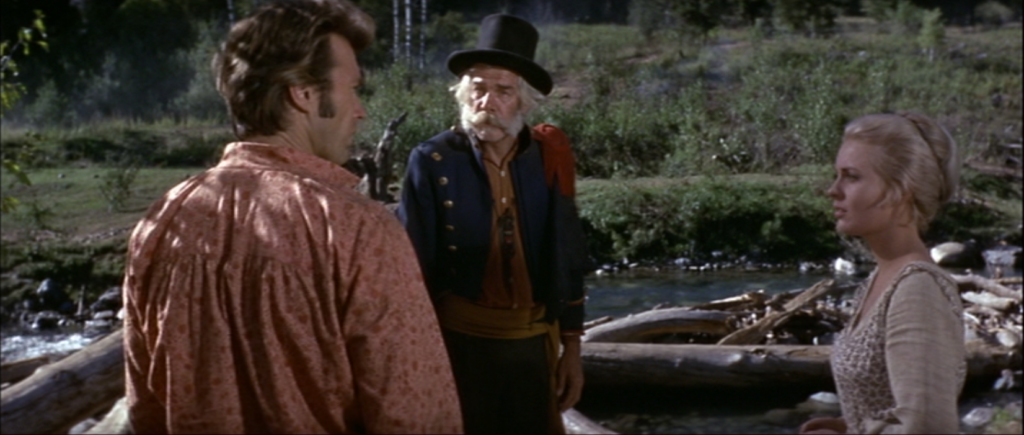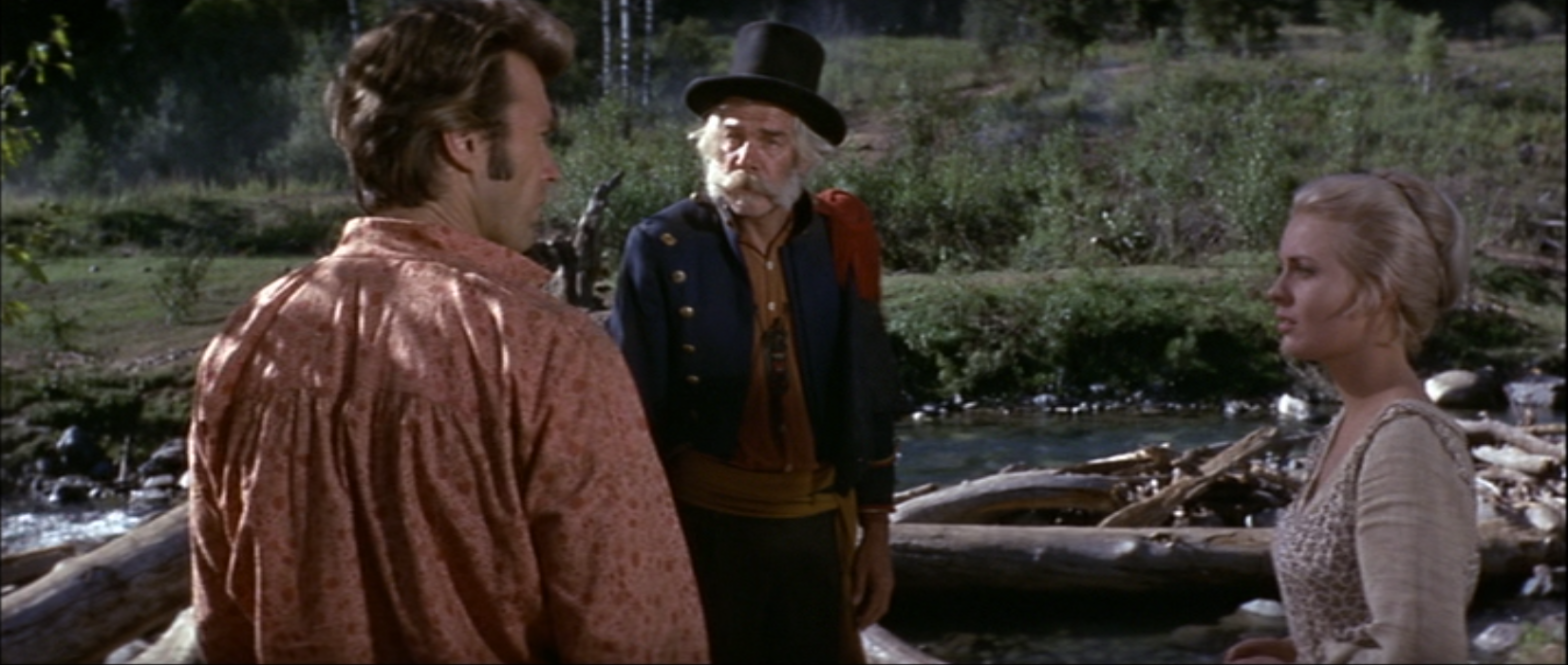Paint Your Wagon (1969) dir. Joshua Logan
It is the height of the California Gold Rush, and a motley assembly of prospectors from around the world have joined a wagon train to the next possible strike. The wagon of two Michigan ex-farmer brothers goes off a cliff, killing one of them. Affable scoundrel Ben Rumson (Lee Marvin) is conducting an impromptu funeral for the man when it’s discovered that the local soil is rich in gold. He promptly stakes a claim, and makes the surviving brother (Clint Eastwood) his partner. Around them, a mining camp rises, No-Name City.

Partner is a straight arrow sort of man, in contrast to Ben’s wicked ways. But the one line Ben won’t cross is betraying a partner, and they become good friends.
One day a Mormon comes to No-Name City with two wives. Since there are no other women in town, he’s down on his luck, and his wives don’t get along at all, he agrees to auction off second wife Elizabeth (Jean Seberg). The high bid is made by a drunken Ben. Once he’s married under mining law, and sobered up a bit, he and Elizabeth come to an understanding. He treats her as a proper wife, including building a long-term cabin, and she treats him as a proper husband. They soon love each other.
However, this does nothing for the blue balls of the rest of the miners. It’s learned that a shipment of French bawds is coming into Fresno, and Ben comes up with the audacious plan to divert this shipment to No-Name City to set up their first cathouse. While Ben and his crew are absent, Partner looks after Elizabeth and they fall in love as well.
This causes some friction when Ben returns. Elizabeth has a solution. Since polygyny was acceptable to the Mormons, and no one in town has an issue with prostitution, polyandry should be okay as well. Thus, she’s okay with having two husbands. And this being the frontier, Ben and Partner eventually come around to the idea.
Paint Your Wagon is a musical, loosely based on the Lerner and Lowe stage play of the same name. (That is, it shares the setting, some songs, and a few character names.) A darker screenplay was written by Paddy Chayefsky, then lightened up again by Alan Jay Lerner. It was shot on location in Oregon, standing in for old-time California. The production was famously troubled and went way over budget, so even though the movie sold a lot of tickets, it was considered a bomb.
After our three leads come to an agreement, they are happy for a season, while No-Name City becomes a wide-open boom town, with actual if flimsy buildings. But with this new prosperity comes the forces of civilization. First, a Parson (Alan Dexter) who preaches against sexual sin, and then a group of lost settlers, looking to make farms out of the fertile soil. Elizabeth takes in the Fenty family and suddenly develops a taste for “respectability”, something that Ben is not at all interested in. Plus, the easily found gold is drying up. No-Name City’s days are numbered.
One of the many issues with the movie was that none of the three leads were trained singers, a big problem for a musical. Ms. Seberg was dubbed over, but Lee Marvin and Clint Eastwood had to just try their best. The results are…mixed. Mr. Marvin is at least entertaining. The one song that still gets a lot of radio play is “They Call the Wind Mariah”, which is led by Harve Presnell as Rotten Luck Willie, gambler and eventual saloon owner. The placement suggests that even he has his regrets.
Ben is a character who reminds me a bit of Robert Heinlein’s Lazarus Long in his contempt for “civilization.” He values his freedom, and cannot conform to society’s rules. So it is that he is constantly moving on to the next strike when a place gets too civilized. There’s a bittersweet note to this comedy. The three-way marriage, and No-Name City itself, are by their natures unsustainable. They flourish for a brief glorious season, and then are gone. Partner and Elizabeth can adapt to the new ways, but Ben and many of his fellow prospectors cannot.
The scenery is gorgeous, and the destruction of No-Name City hilarious. The movie’s long, nearly three hours, but that includes a ten-minute “intermission” to stretch your legs.
Content note: In addition to things already mentioned, a “bull vs. bear” fight is promised. It doesn’t quite come off. Some humans engage in fisticuffs though. Parents of younger viewers should prepare to answer questions and discuss the characters’ behavior.
Overall: Not one of the great musicals, but it has its charms. Worth watching.

